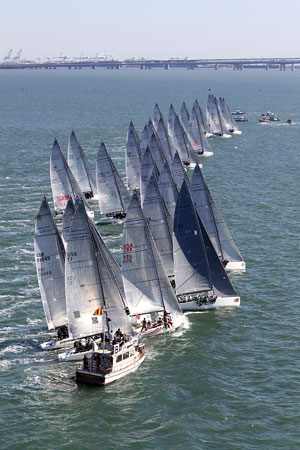Crash Davis spent three weeks in The Show once. For the better part of a month, the fictional hero of the _Bull Durham_ hit white balls for batting practice, did his windsprints in modern-day cathedrals of concrete, sifted sand, and precision-cut grass, had someone else carry his bags, ordered room service whenever he was hungry, and made long-legged, brainy women swoon.
Like Crash, I was a catcher once. I spent a few springs behind the irregular pentagon, catching 40-mph heaters from a left-handed classmate who was just wild enough—on the mound and off it—to scare the batters. Then I went on vacation one April, and when I came back I was more afraid of the ball than the hitters. Suddenly, I was turning away from each pitch, which is a cardinal sin for a catcher considering the only armor is right up front. Mercifully, the coaches saw this and brought an end to my catching. My baseball career followed suit shortly thereafter.
If I were to make “The Show,” it would have to be in some other sport.
You could start a pretty lengthy argument in a sailors’ bar by asking what is “The Show” of our sport. Is it the America’s Cup? The Volvo? The Audi MedCup? The Mediterranean Maxi circuit? The Olympic dinghy circuit? For an amateur sailor, none of those are realistic options. If you’re looking for the circuit toward which most Category 1 sailors currently point their aspirations, I suspect the Melges 32 would come up more often than not.

Joy Dunigan/www.Melges32.com| |**With 32 boats on the line, getting a good start was essential at the 2010 Melges 32 Worlds in San Francisco last September. **|
A few years ago, the Farr 40 sat atop this lofty pedestal. I spent 10 days breathing that rarefied air one November. It was everything I thought it would be. I can’t speak to the long-legged beauties with PhD’s—though in South Beach it’s usually a simply matter of looking in the right places—but the sailing was intense. We practiced harder than most people sail. The race management was flawless, the water a perfect shade of blue. And off the water we were treated much better than we had a right to be. I wouldn’t go so far as to call it the 10 greatest days of my life, but had the call come again, I would have tripped over myself trying to answer the phone.
Unfortunately, that second call never came. In retrospect, I learned a lot during that 10-day call-up. I know where I came up short and a lot more about what not to do. In the years since I’ve spent a lot more time on the water sailing all sorts of boats, honing my craft. Should opportunity rise again I wanted to be prepared.
She knocked again earlier this fall, in the form of an understated e-mail titled, “M32 Sailing.” Before I opened it, I knew it was good news.
The 2010 Melges 32 Gold Cup, hosted by the luxurious Lauderdale YC in Fort Lauderdale, Fla., is the first event of the 2011 winter season for the U.S. 32 programs. There will be 22 teams on the line, down 10 from fleet that sailed in the class’s 2010 world championship in September, but a strong group of domestic and international teams nonetheless. Each boat is allowed three pros and those spots are not wasted. The crew list is a who’s who of some of the best professional trimmers and tacticans
As with most of these pro-am classes, the hired hands do most of the heavy lifting when it comes to boatspeed and tactics. However, for an amateur, assuming that you don’t have a lot to do with the performance of the team is the first step out the door. The best amateurs know how to do all the little things right and how to avoid making any race-killing mistakes, for which there are countless opportunities.
There are those who wonder about the allure of spending the better part of a week tacoed over a lifeline—or hunched in the bilge if the wind is light—listening to some antipodean pro tell you in no uncertain terms how you’re endangering his paycheck with frightening regularity, how his grandmother could hike harder than you, and how you’re completely replaceable with one quick phone call, or text message.
I often find myself wondering the same thing.
The truth is, that’s just it. So much big-boat sailing is more about whom you know and how many fresh jokes you can tell on the rail. The results are more likely to be determined by weather or rating or if the owner is driving or letting the resident pro take the wheel—or at least that’s the story for the beer tent after racing. It’s rare that any amateur big-boat sailor is evaluated predominantly on his skill and effort. But in tight one-design classes like the Melges 32, especially when those classes are at their peak, there is little room for nepotism, sentiment, or good humor. It’s a bottom-line business and the opportunity to be judged like that, to find out what you’re made of, is quite unique for weekend warriors like myself. And when it comes you either rise to the occasion or you don’t. There’s no money riding on the answer, the ultimate reward is simply the opportunity to come back and do it again sometime. But among the perks of playing in the majors; Crash never mentioned the significant salary upgrade. Had someone offered him the chance to stick around The Show and play, for free, I think it would’ve been an easy decision.









